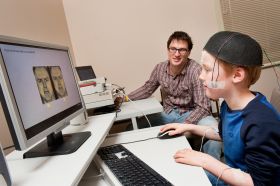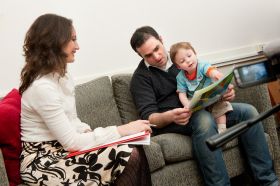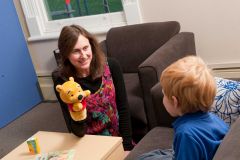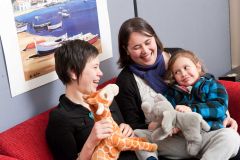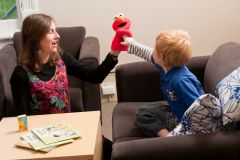Most families with children experience a varying degree of parent-child conflict. Although some conflict is fine, frequent, intense, negative interactions between parents and children can play a significant role in numerous child and adolescent disorders. Self-report measures and observational measures are two techniques that are commonly used to assess parent-child conflict, but these measures have been shown to have a number of weaknesses. For example, it is often difficult to get a true picture of what happens in real life because parent-child dyads tend not to want to talk about negative behaviours in a laboratory setting. The measures also rely on dyads' memory for conflicts that occurred days, weeks, or months earlier. Continuing our interest in laboratory analogues of real-life behaviour, we have developed a new method that can be used to generate parent-child conflict in a highly-controlled, laboratory setting. We combined two experimental methods, developed within two different areas of psychology, in a unique way to create parent-child conflict. This has allowed us to examine 'on line' how the members of a dyad manage that conflict.
Our task effectively induced mother-child conflict across a wide range of ages (6-, 11-, and 16-year-olds). On the whole, participants conflicted on the majority of the conflict trials, but not on the non-conflict trials. Participants took multiple turns to come to a consensus decision. The majority of
conflicts were resolved by one dyad member capitulating and agreeing with the other member's response. Other strategies included instructing the other person to decide, and turn taking. Only rarely was coercion/dominance used to resolve the conflict.
Our findings demonstrate that our new technique is an effective experimental tool for generating conflict between mothers and children under highly-controlled laboratory conditions. Although the task appears mundane, it generated plausible conflict that lead to considerable debate between mothers and children. Our technique has the potential to be useful in a variety of clinical settings as an assessment and treatment tool. Conflict can be generated in a safe environment, observed, and then adaptive techniques for resolving conflict can be modelled. Finally, the technique is not limited to parent-child conflict; it could be used to treat other kinds of conflicts such as marital or workplace conflict.
